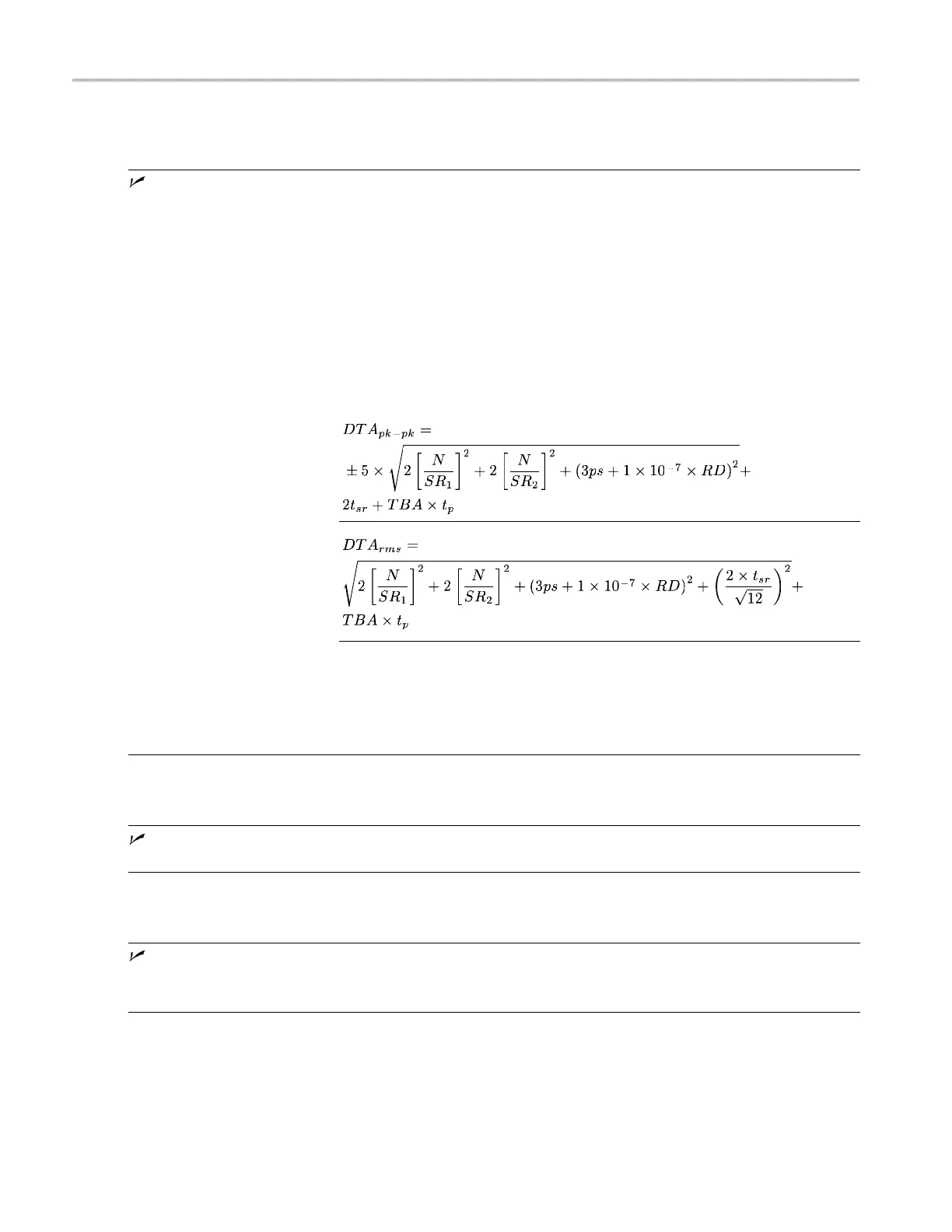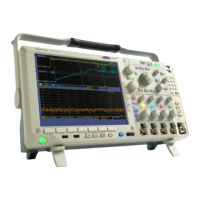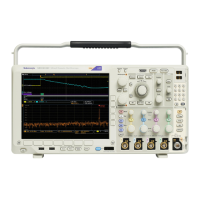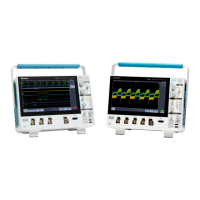Appendix A: MDO4
000 Specifications
Table 2: Horizontal and acquisition system specifications (cont.)
Characteristic Description
The formula to calculate the delta-time measurement accuracy (DTA) for a given
instrument setting and input signal is given below (assumes insignificant signal content
above Nyquist and insignificant error due to aliasing):
SR
1
= slew rate around 1st point in measurement (1
st
edge)
SR
2
= slew rate around 2nd point in measurement (2
nd
edge)
N =input-referred noise (V
RMS
)
TBA = time base accuracy (5 ppm)
t
p
= delta-time measurement duration (sec)
RD = (record length)/(sample rate)
t
sr
= 1/(sample rate)
assume edge shape that results from Gaussian filter response
Delta-time measurement
accuracy
The term under the s quare-root sign is the stability and is due to TIE (Time Interval
Error). The errors due to this term occur throughout a single-shot measurement.
The second term is due to both the absolute center-frequency accuracy and the
center-frequency stability of the time base and varies between multiple single-shot
measurements over the observation interval (the amount of time from the first
single-shot measurement to the final single-shot measurement).
Table 3: Digital acquisition specifications, MDO4000 series
Characteristic Description
Threshold Accuracy
±(100 mV + 3% of threshold setting after calibration)
Requires valid SPC.
Table 4: RF Channel Characteristics
Characteristic Description
Phase Noise
10 kHz: < -90 dBc/Hz
100 kHz: < -95 dBc/Hz
1 MHz: < -113 dBc/Hz
182 MDO4000 Series Oscilloscopes User Manual

